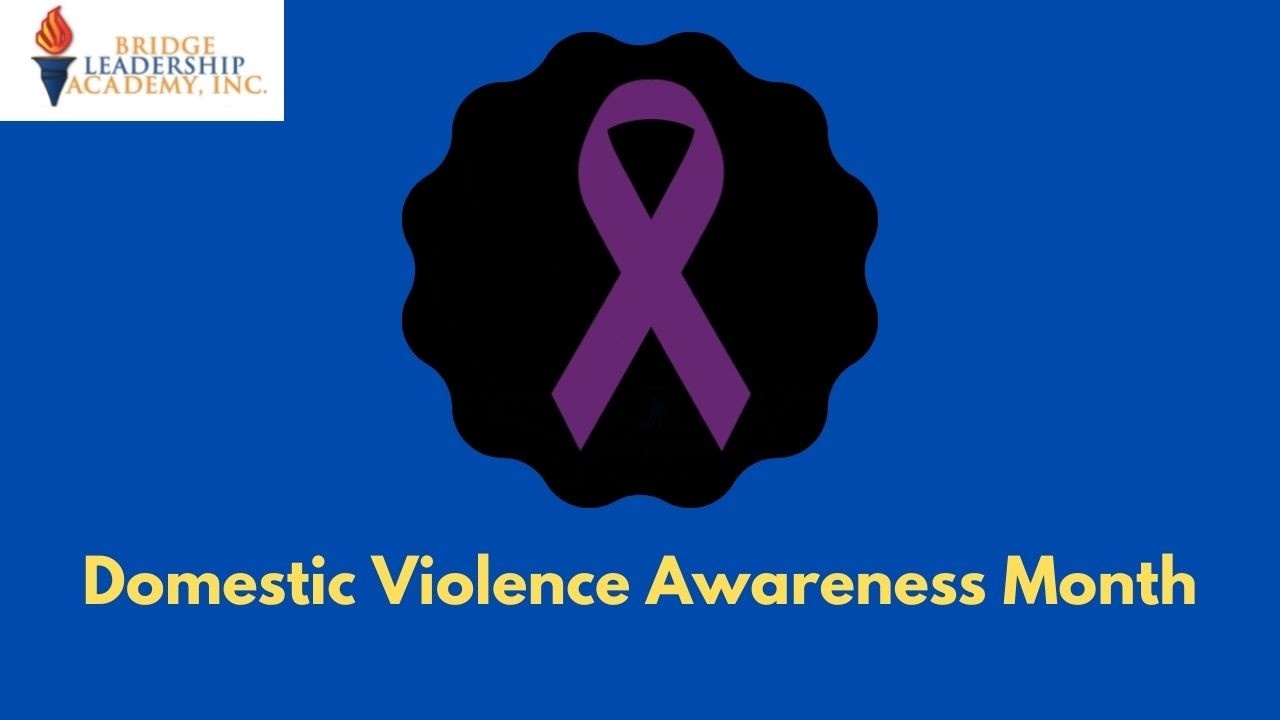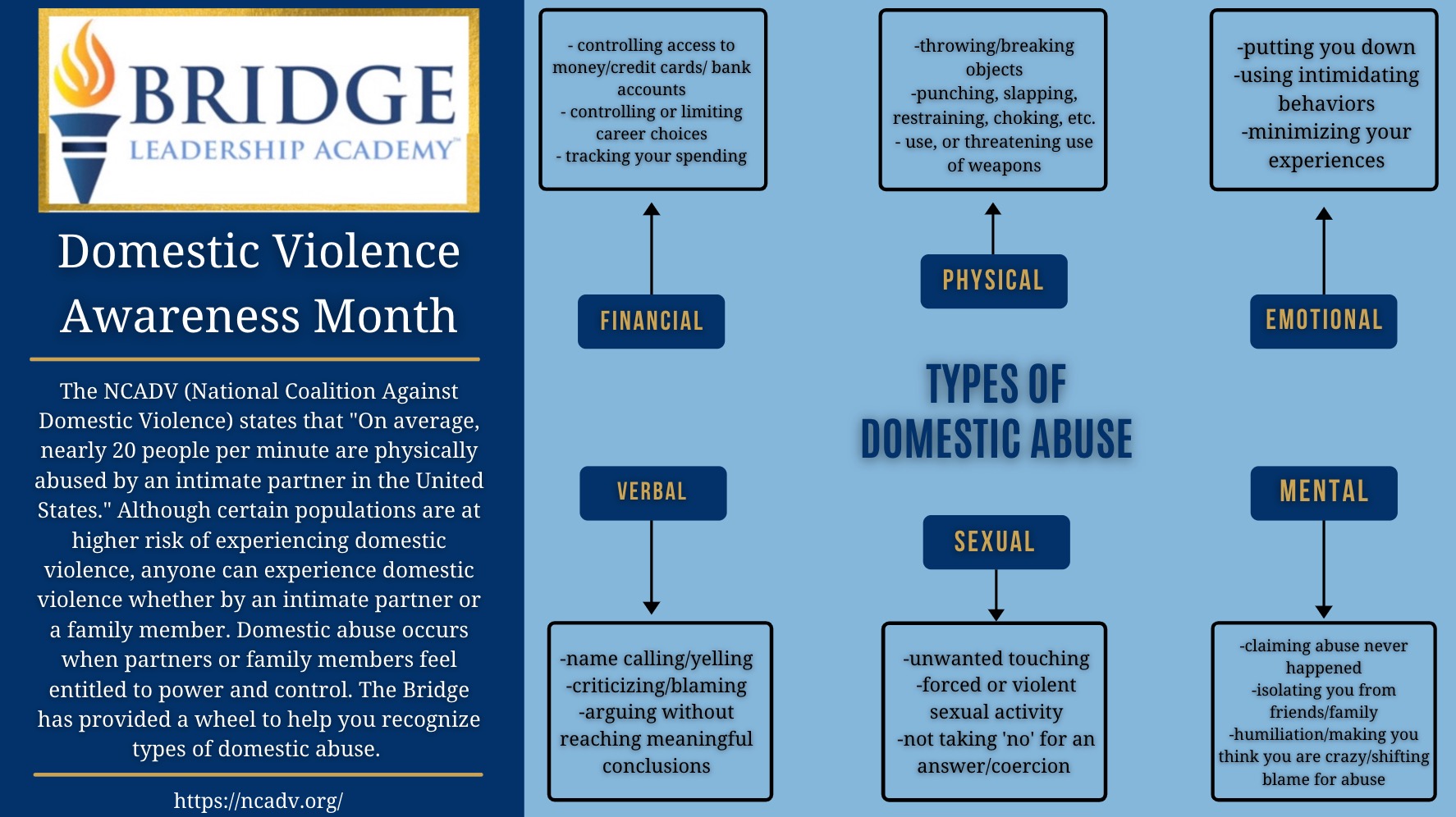Domestic Violence Awareness Month
Oct 11, 2021
October is National Domestic Violence Awareness Month. The NCADV (National Coalition Against Domestic Violence) states that "On average, nearly 20 people per minute are physically abused by an intimate partner in the United States." Although certain populations are at a higher risk of experiencing domestic violence, anyone can experience it, whether by an intimate partner or a family member. Domestic abuse occurs when partners or family members feel entitled to power and control. The Bridge has provided a chart to help you recognize types of domestic abuse.

Financial
- Controlling access to money/credit cards/bank accounts
- Controlling or limiting career choices
- Tracking your spending
Physical
- Throwing/breaking objects
- Punching, slapping, restraining, choking, etc.
- Use or threatening use of weapons
Emotional
- Putting you down
- Using intimidating behavior
- Minimizing your experiences
Verbal
- Name-calling/yelling
- Criticizing/blaming
- Arguing without reaching meaningful conclusions
Sexual
- Unwanted touching
- Forced or violent sexual activity
- Not taking 'no' for an answer/coercion
Mental
- Claiming abuse never happened
- Isolating you from friends and family
- Humiliation/gaslighting/shifting blame for the abuse
"Domestic violence affects all aspects of a victim's life. When abuse victims are able to safely escape and remain free from their abuser, they often survive with long-lasting and sometimes permanent effects to their mental and physical health; relationships with friends, family, and children; their career; and their economic wellbeing." It is important to be able to recognize signs of domestic abuse, how and where to get help, what you can do if you suspect a loved one is being abused, and how systemic issues contribute to domestic violence rates across certain populations.

Signs
You are:
- Scared of how your family member/partner acts or will act
- Scared of what will happen if you break up/set boundaries
- Constantly making excuses to other people for your partner's behavior
- Avoiding conflict with your partner/family member
Your Partner/Family Member:
- Uses force/violence to "solve" their problems
- Blames you for how they feel or act
- Displays obsessive jealousy
- Pressures you sexually
- Is cruel to animals
- Makes you feel like there "is no way out" of the relationship
Risk Factors
Victims:
- 1 in 3 women/1 in 4 men
- LGBTQ people
- Those in low-income households
- Individuals with low self-confidence
- Both Black men and omen
- 1 in 15 children are eyewitnesses to domestic violence
Perpetrators:
- Victims of physical or psychological abuse
- Heavy alcohol and drug use
- Aggressive or delinquent behavior as a youth
- Beliefs in strict gender roles
Getting Help
Victims:
- Make trusted loved ones aware
- Craft a personal safety plan (preparing for future incidents, response, and escape)
- Gather resources for ending the relationship (money, legal documents, research legal action)
- Create an emergency contact list
- Contact local domestic violence shelters
Helping Others:
- Lend a sympathetic ear
- Guide them to community services
- Help them develop a safety plan
- Educate yourself on how domestic violence affects victims
Resources
General:
- Hotline
- 1-800-799-7233
- Textline:
- "START" to 88788
- LGBT
- 1-178-596-0342
- Women of Color
- 1-800-537-2238
- ncadv.org
- hrc.org
KS/MO:
- Hope House
- 816-461-4673
- Rose Brooks
- 816-861-6100
- LGBT:
- Kansas City Anti Violence Project
- 816-701-9984
- Kansas City Anti Violence Project

